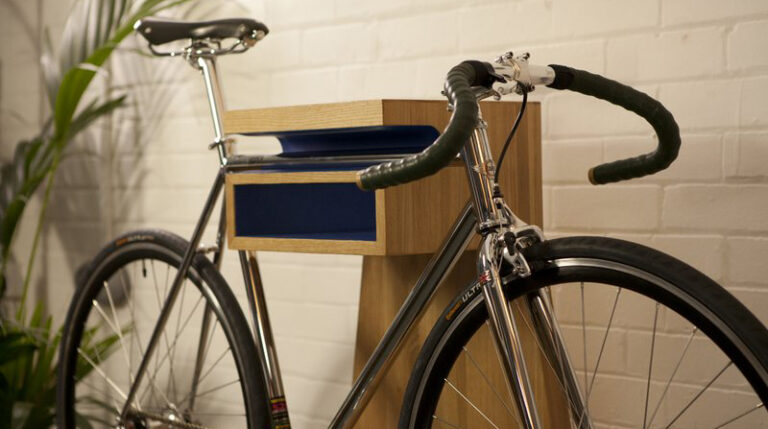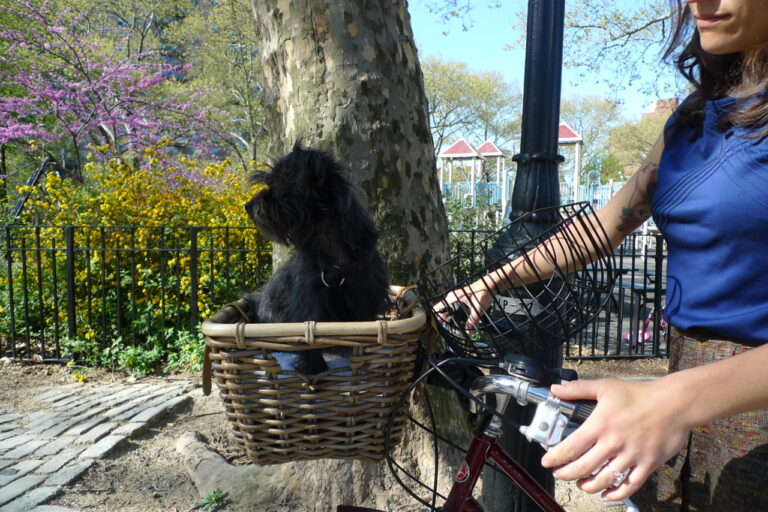A headset
The trade name of a newer design of headset, which uses an unthreaded steerer tube. The stem clamps on externaly (see expander wedge).
Allen key
Hexagonal drive bar, in various sizes, that fits into the head of an Allen bolt. Most bikes use Allen bolts.
Alloy
Bicycle trade word for aluminium alloy, derived from the ‘al’ of aluminium. Not strictly the proper meaning of the word.
Aluminium
The metal used most commonly in the production of modern bike frames and components. Very light and can be built into very rigid frames if used in an oversize format.
Anodising
Treatment process that colours or hardens the surface of aluminium.
ANSI
An US standards testing organisation that, for our purposes, sets a helmet standard.
Bar ends
Bolt-on extensions to your handlebars, that give you extra, more powerful positions to climb or cruise with.
Bearings
The round balls that rotate on bearing surfaces inside your hubs and bottom brackets. Thankfully corralled in cages and sealed units in modern equipment which stops them rolling under the fridge.
Bolt circle diameter (BCD)
The diameter of the circle drawn through the centre of the chainring bolts. Important to know when ordering replacements.
Boss
A frame fitting that’s welded directly to the frame tubes. Used for bolting on accessories like bottle cages, for example.
Bottom bracket
The bearing that the cranks spin on, held in the bottom bracket shell.
Brazing
A frame construction technique using brass to join tubes together.
Buckled
When a wheel gets knocked out of line, it’s said to be buckled.
Bunnyhop
Lifting the bike clear of the ground by pulling up on the bars and pedals.
Butting
A metal component that has the wall thickness or section increased in a step is said to be butted.
Cadence
The rate (in revs/sec) that you pedal at.
Cantilevers
Powerful brakes fitted to lower end mountain bikes and higher end utility bikes. They run on pivots welded to the forks or rear stays.
Cartridge bearings
A sealed bearing unit that pops into a shell, containing the bearing surfaces, ball bearings, grease and dirt seals.
Chainstays
The frame tubes that run from the bottom bracket shell to the rear dropout.
Chainrings
The (usually three) cogs that are fitted to the chainset. They increase in size from the inner to the outer.
Chainset
The complete assembly of crank, chainrings and bottom bracket
Chain suck
When the chainring refuses to let go of the chain, the chain gets sucked between the chainset and chainstay. Usually causing damage.
Chromoly
A high strength steel alloy used in bicycle frame construction.
Cleat
A hardened metal plate that clips into a clipless pedal’s mechanism, locking the shoe to it.
Crank
The metal arms that run from the pedal to the bottom bracket axle.
Crank extractor
Specialist tool for removing crank arms.
Crud Catcher
Plastic clip-on mudguard that’s practically essential for UK riding conditions.
Damping
A speed sensitive system which uses oil to control the movement of a suspension system.
Derailleur
The mechanism that pushes the chain across the sprockets or chainwheels, when a shift lever is moved.
Dish
The amount a wheel is offset on the hub. A rear wheel is dished to give room for the sprockets.
Disk brake
A braking system that works on a disc mounted to the hub, rather than working on the rim.
Double Butted
A tube that has greater wall thickness at both ends than in the middle section is said to be double butted.
Down Tube
The frame tube that runs from the bottom of the head tube to the bottom bracket.
Dropout
The plate welded to the frame or forks, where the wheels locate into the frame.
Endo
A trick involving rocking your bike forwards on it’s front wheel by locking the front wheel.
Expander wedge
Used to jam the traditional stem inside the steerer tube of the fork (see Aheadset).
First
The lowest gear, also referred to as the granny gear.
Flange
The part of the hub the spokes thread through.
Forks
The part of the bike that holds the front wheel, and turns to allow steering.
Front Mech
The gear mechanism that shifts the chain across the chainwheels.
Frame
The main skeleton of the bike, consisting down tube, top tube, head tube, seat tube, chainstays, seat stays and bottom bracket shell.
Freewheel
Cunningly designed hub that lets the wheel go on turning when you stop pedalling. Without it the popularity of the bicycle would be nil. The opposite is the fixed wheel, used by a certain type of obsessed cyclist. See retrogrouch.
Gear ratio
A method of determining the gearing of the bike, measured in effective wheel diameter.
Granny ring
The smallest chainring.
Gripshift
A type of gear changing system relying on twist-grip activation.
Groupset
The core of the bike’s components. Gears, brakes, hubs, bearings, cranks, headset.
Goretex
A waterproof fabric that breathes. Used to make the best quality cycling and outdoor clothing.
Handlebar
The part of the bike that your grips, shifters and levers mount to.
Head tube
The short tube that runs from the top of the forks to the bottom of the stem. Contains the headset.
Headset
The bearing in which the fork steerer tube rotates, contained in the headtube.
Hub
The unit that holds the bearings, and supports the spokes at the centre of the wheel.
Hyperglide
Brand name of Shimano rear gear sprockets which have profiled teeth and special ‘shift ramps’ for easier shifting under load.
Indexing
Gears which click from position to position, making selecting the right one easy.
Jockey wheels
The two small wheels which guide the chain in the rear derailleur.
Knobblies
Aggressive tyres for true off road use.
Lacing
The process or type of spoking pattern used on wheels.
Lube
Anything from oil to heavy duty grease. Dry lubes evaporate leaving a dry film (usually based on teflon). Wet lubes remain wet to the touch. Dry lubes are good for dusty conditions because they don’t pick up dirt, wet lubes protect better in wet conditions.
Lycra
Stretch fabric that makes you look fatter than you really are.
Nipple
Small brass or alloy threaded adjuster that fixes the spokes to the rim.
Nylock
A nut with a nylon insert which the bolt thread cuts into, designed to stop the nut working loose. Very useful for fixing pannier racks and so on.
Oversize
Anything larger than normal. Most mountain bikes now have oversize tubing. It just means it’s bigger diameter than the first mountain bike tubing was.
Presta
The thin valve, used more commonly on racing bikes, and the choice for some offroad riders.
Quick Release (QR)
A mechanism that allows quick and easy tightening usually of the wheel hub/axle assembly and the seat post clamp.
Rapidfire
A type of shifter, made by Shimano, which operates with two levers, one moving the chain to a smaller sprocket, and the other moving it to a larger sprocket.
Rear mech
The gear mechanism that moves the chain across the rear sprockets.
Rim
The metal hoop of the wheel, and that the tyre runs on.
Saddle
The bit that you sit on!
Schrader
The type of valve found on cars and on some bikes.
Seal
Any part intended to stop muck getting into the internals of something delicate, like a bearing.
Seat stays
The frame tubes that run from where the seat post enters the frame to the rear dropouts.
Seat post
The tube that is clamped in the frame and supports the saddle.
Seat tube
The tube that holds the seatpost and runs down to the bottom bracket.
Shifters
The levers on the handlebars to allow you to change gear.
Sidewall
The side of a tyre. The bit without tread.
Slider
The moving part of a suspension fork leg.
SPD
The original mountain bike clipless pedal system, made by Shimano.
Spokes
The thin metal wires that run from the hub to the rim.
Spoke key
Tool which turns spoke nipples and adjusts spoke tension. A wheel wrecker in the wrong hands.
Sprockets
The cogs at the rear of the bike that the chain drives.
Stanchion
The fixed part of a suspension fork leg.
Steerer tube
The tube that runs inside the head tube, locating the headset and supporting the front fork.
Stem
The welded tube assembly that connects the handlebar to the front fork.
Titanium
The oft-hailed wonder metal of the modern age. Very expensive light and strong.
Top tube
The horizontal frame tube that runs from the top of the head tube to the top of the seat tube.
Truing
The process of straightening a wheel by adjusting the tension of the spokes.
Wheelbase
The distance between the front and rear axles.





